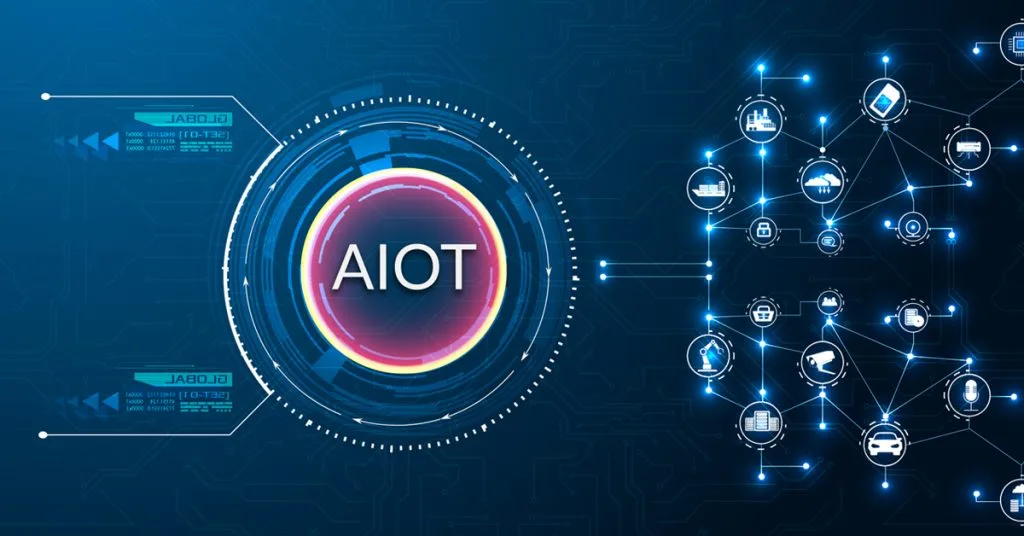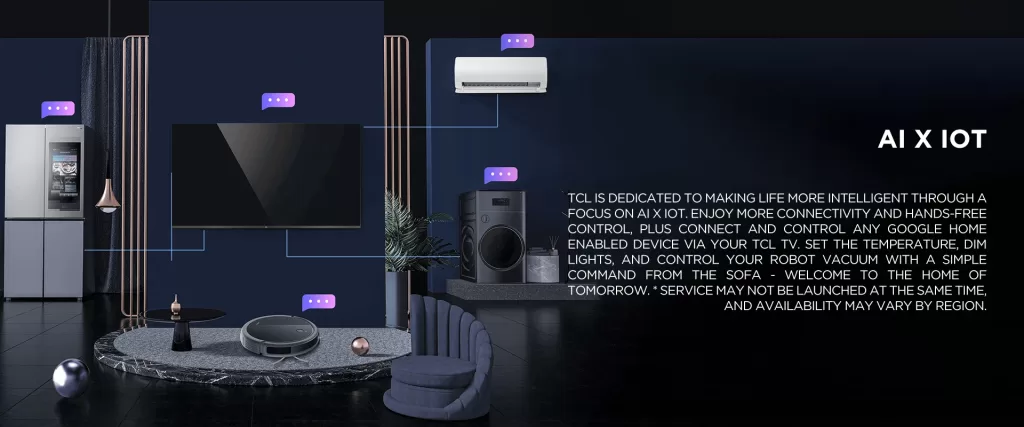How AI and IoT or (AIoT) are Transforming the World Together. The world is becoming more connected and intelligent than ever before, thanks to the convergence of two powerful technologies: artificial intelligence (AI) and the internet of things (IoT). AI and IoT are not just buzzwords, but real solutions that are driving innovation and efficiency across various domains and industries. In this blog, we will explore what AI and IoT are, how they work together, and what benefits they bring to the world.
What is AI (Artificial Intelligence)?
AI is the science and engineering of creating systems that can perform tasks that normally require human intelligence, such as learning, reasoning, decision making, and problem solving. AI can be applied to various fields, such as computer vision, natural language processing, speech recognition, machine learning, robotics, and more. AI can also be classified into two types: narrow AI and general AI. Narrow AI is when a system can perform a specific task or a set of tasks very well, such as playing chess, recognizing faces, or translating languages. General AI is when a system can perform any intellectual task that a human can do, such as understanding context, reasoning logically, or expressing emotions. General AI is still a hypothetical concept that has not been achieved yet.
What is IoT (Internet of Things)?
IoT is the network of physical objects or “things” that are embedded with sensors, software, and other technologies that enable them to connect and exchange data with other devices and systems over the internet. These things can range from wearable devices, smart home appliances, industrial machines, vehicles, medical equipment, and more. IoT can collect and process large amounts of data from various sources and provide insights and actions that can improve efficiency, safety, convenience, and quality of life.

How do AI and IoT Work Together?
AI and IoT are complementary technologies that enhance each other’s capabilities and create new possibilities. AI can provide the intelligence and analytics that IoT devices need to make sense of the data they collect and act on it autonomously or with minimal human intervention. IoT can provide the data and connectivity that AI systems need to learn from experience and improve their performance and accuracy. Together, they form the artificial intelligence of things (AIoT), which is the combination of AI and IoT to create smart systems that can interact with their environment and optimize their operations.
What are the Benefits of AIoT?
AIoT has many applications and benefits across various domains and industries. Here are some examples:
AIoT in LED TVs
AIoT or artificial intelligence of things is the combination of artificial intelligence (AI) and the internet of things (IoT). In LED TVs, AIoT can be used to improve the user experience and make the TV more intelligent.
Here are some of the ways AIoT can be used in LED TVs:
- Personalization: AIoT can be used to personalize the TV experience for each user. For example, the TV can learn the user’s viewing habits and preferences and automatically adjust the settings accordingly.
- Recommendations: AIoT can be used to recommend content to the user based on their viewing history and preferences. This can help the user find new content that they will enjoy.
- Upselling: AIoT can be used to upsell products and services to the user. For example, the TV can recommend movies or TV shows that are related to the content that the user is currently watching.
- Service and support: AIoT can be used to provide service and support to the user. For example, the TV can automatically detect problems and send alerts to the user or the manufacturer.
- Security: AIoT can be used to improve the security of the TV. For example, the TV can be equipped with facial recognition technology to prevent unauthorized access.
AIoT is still a relatively new technology, but it has the potential to revolutionize the way we interact with LED TVs. As AIoT technology continues to develop, we can expect to see even more innovative ways to use it to improve the user experience and make LED TVs more intelligent.
Here are some specific examples of how AIoT is being used in LED TVs today:
- TCL: TCL is a Chinese company that is also using AIoT in its LED TVs. The company’s AIoT TVs are equipped with a voice assistant that can answer questions, control the TV, and more.
TCL AI X IoT (AIoT) LED TV in Pakistan. - Skyworth: Skyworth is a Chinese company that is using AIoT to make its LED TVs more intelligent. The company’s Swaiot ecosystem connects Skyworth TVs to other smart devices in the home. This allows users to control their TVs with their voice, get recommendations for content, and more.
- KONKA: KONKA is another Chinese company that is using AIoT in its LED TVs. The company’s AIoT TVs are equipped with facial recognition technology. This allows users to control their TVs with their faces and get personalized recommendations for content.

Smart Retail with AIoT
Artificial intelligence and the internet of things (AIoT) can be used to enhance the customer experience and increase sales in retail stores. AIoT technologies, such as computer vision, facial recognition, and natural language processing, can be used to:
- Identify customers: AIoT can be used to identify customers by their face, phone number, or other unique identifier. This information can be used to personalize the shopping experience and provide targeted recommendations.
- Analyze customer preferences and behavior: AIoT can be used to track customer behavior in the store, such as what products they look at, what products they buy, and how long they spend in each aisle. This information can be used to improve the layout of the store, optimize inventory, and personalize recommendations.
- Personalize recommendations and offers: AIoT can be used to recommend products to customers based on their past purchases, browsing history, and other factors. AIoT can also be used to send personalized offers to customers, such as discounts or coupons.
- Optimize inventory and pricing: AIoT can be used to track inventory levels and pricing. This information can be used to ensure that the right products are in stock and that prices are competitive.
- Provide seamless checkout: AIoT can be used to automate the checkout process, making it faster and easier for customers to pay for their purchases.
By using AIoT, retailers can create a more personalized and convenient shopping experience for their customers. This can lead to increased sales and customer satisfaction.
Here are some specific examples of how AIoT is being used in retail today:
- Walmart is using AIoT to track the location of products in its stores. This information is used to ensure that products are always in stock and that shelves are always full.
- Amazon Go is a cashierless convenience store that uses AIoT to track customers as they shop. When a customer takes a product off the shelf, it is automatically added to their virtual cart. When the customer is finished shopping, they simply walk out of the store and their bill is automatically charged to their account.
- Sephora is using AIoT to recommend products to customers based on their skin type and preferences. When a customer walks into a Sephora store, their face is scanned by a camera. The information from the scan is used to recommend products that are right for the customer’s skin.
These are just a few examples of how AIoT is being used in retail today. As AIoT technology continues to develop, we can expect to see even more innovative ways to use it to improve the customer experience and increase sales in retail stores.
AIoT for Smart Homes
Artificial intelligence and the internet of things (AIoT) can be used to make homes more comfortable, secure, and energy-efficient. AIoT technologies, such as sensors, smart devices, voice assistants, and cloud services, can be used to monitor and control a variety of home systems, including:
- Lighting: AIoT can be used to control the lighting in a home, making it brighter or dimmer depending on the time of day, the activity in the home, or the user’s preferences.
- Temperature: AIoT can be used to control the temperature in a home, making it warmer or cooler depending on the user’s preferences or the weather outside.
- Security cameras: AIoT can be used to monitor security cameras in a home, providing alerts if any suspicious activity is detected.
- Appliances: AIoT can be used to control appliances in a home, such as turning them on or off, or adjusting their settings.
- Entertainment systems: AIoT can be used to control entertainment systems in a home, such as turning on the TV, playing music, or changing the channel.
By using AIoT, homeowners can create a more comfortable, secure, and energy-efficient home. They can also automate many of the tasks that they currently do manually, such as turning off the lights when they leave the house or adjusting the thermostat when they go to bed.
Here are some specific examples of how AIoT is being used in smart homes today:
- Amazon Echo: Amazon Echo is a voice-activated speaker that can be used to control a variety of smart home devices, such as lights, thermostats, and security cameras.
- Nest Thermostat: Nest Thermostat is a smart thermostat that can learn the user’s habits and adjust the temperature accordingly. It can also be controlled remotely, so the user can change the temperature before they come home or while they’re away.
- Samsung SmartThings Hub: Samsung SmartThings Hub is a device that connects all of the smart devices in a home to a single platform. This allows users to control all of their devices from a single app or voice command.
AIoT for Smart Cities
AIoT can enhance urban living standards and environmental sustainability by using artificial intelligence and the internet of things.
- Manage traffic flow: AIoT can be used to monitor traffic flow and identify bottlenecks. This information can be used to adjust traffic signals and optimize traffic routes.
- Reduce pollution: AIoT can be used to monitor air quality and identify sources of pollution. This information can be used to improve air quality regulations and reduce emissions.
- Enhance public safety: AIoT can be used to monitor public spaces and identify potential threats. This information can be used to deploy security personnel and prevent crime.
- Optimize waste management: AIoT can be used to track waste collection and disposal. This information can be used to reduce waste and improve recycling rates.
- Provide emergency services: AIoT can be used to track emergency vehicles and dispatch them to incidents more quickly. This can help to save lives.
- And more: AIoT can be used to improve a wide range of other aspects of urban life, such as water management, energy efficiency, and transportation.
By using AIoT, cities can create a more livable, sustainable, and efficient environment for their citizens.
Here are some specific examples of how AIoT is being used in smart cities today:
- Singapore: Singapore is using AIoT to manage traffic flow and reduce pollution. The city has installed sensors on traffic lights and vehicles to collect data on traffic conditions. This data is used to adjust traffic signals and optimize traffic routes. Singapore is also using AIoT to monitor air quality and identify sources of pollution. This information is used to improve air quality regulations and reduce emissions.
- London: London is using AIoT to enhance public safety. The city has installed cameras and sensors in public spaces to monitor for potential threats. This information is used to deploy security personnel and prevent crime. London is also using AIoT to track waste collection and disposal. This information is used to reduce waste and improve recycling rates.
- New York City: New York City is using AIoT to provide emergency services. The city has installed sensors on emergency vehicles to track their location and status. This information is used to dispatch emergency vehicles to incidents more quickly. New York City is also using AIoT to monitor water quality and identify sources of pollution. This information is used to improve water quality and reduce waterborne diseases.
AIoT for Smart Industries
Utilizing artificial intelligence and the Internet of Things (AIoT) has the potential to enhance efficiency and financial gains across multiple industries, including manufacturing, agriculture, healthcare, logistics, energy, and beyond. The integration of AIoT tools like robots, sensors, drones, RFID tags, and others can be harnessed to:
- Automate processes: AIoT can be used to automate tasks that are currently done manually, such as assembling products, picking and packing orders, and monitoring equipment. This can free up human workers to focus on more value-added tasks.
- Monitor performance: AIoT can be used to monitor the performance of machines and systems, identifying potential problems before they cause downtime or defects. This can help to improve efficiency and prevent losses.
- Detect faults: AIoT can be used to detect faults in machines and systems, even before they cause problems. This can help to prevent downtime and ensure that products meet quality standards.
- Prevent downtime: AIoT can be used to prevent downtime by predicting when machines or systems are likely to fail. This can help to schedule maintenance and repairs in advance, avoiding costly unplanned downtime.
- Optimize resources: AIoT can be used to optimize the use of resources, such as energy, materials, and labor. This can help to reduce costs and improve efficiency.
- Ensure quality: AIoT can be used to ensure the quality of products by monitoring their production process and detecting defects early on. This can help to improve customer satisfaction and reduce product recalls.
By using AIoT, industries can boost productivity and profitability, improve efficiency, and ensure quality.
Here are some specific examples of how AIoT is being used in smart industries today:
- Manufacturing: AIoT is being used in manufacturing to automate tasks, monitor performance, detect faults, prevent downtime, optimize resources, and ensure quality. For example, robots are being used to assemble products, and sensors are being used to monitor the performance of machines. This is helping to improve efficiency and reduce costs.
- Agriculture: AIoT is being used in agriculture to monitor crop health, optimize irrigation, and prevent pests and diseases. For example, sensors are being used to monitor soil moisture and temperature, and drones are being used to spray crops with pesticides. This is helping to improve crop yields and reduce costs.
- Healthcare: AIoT is being used in healthcare to monitor patients, diagnose diseases, and provide personalized treatment. For example, sensors are being used to monitor patients’ vital signs, and AI is being used to diagnose diseases. This is helping to improve patient care and outcomes.
- Logistics: AIoT is being used in logistics to track shipments, optimize routes, and prevent theft. For example, sensors are being used to track the location of shipments, and AI is being used to optimize shipping routes. This is helping to improve efficiency and reduce costs.
- Energy: AIoT is being used in energy to monitor power grids, optimize energy usage, and reduce emissions. For example, sensors are being used to monitor power grid conditions, and AI is being used to optimize energy usage. This is helping to improve the reliability and efficiency of the power grid.









